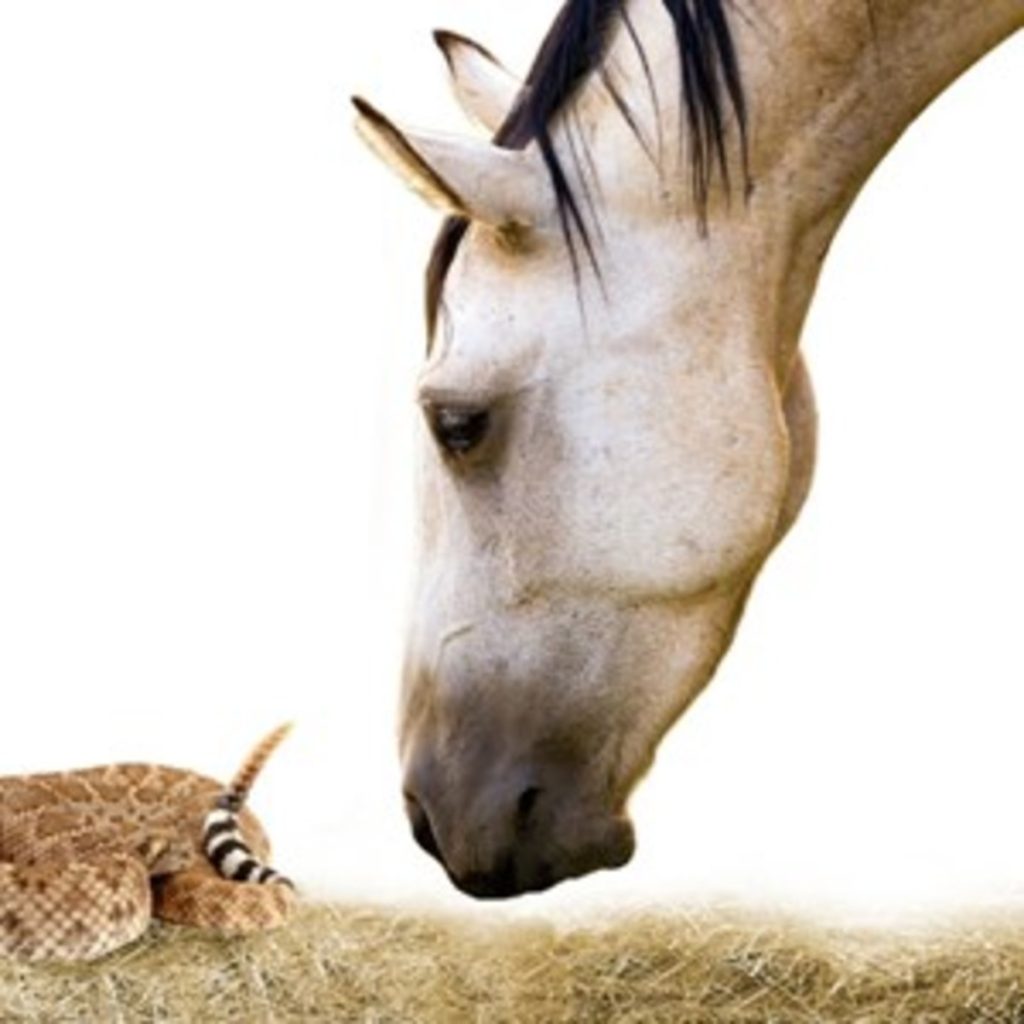
Spring has finally arrived and I came across my first snake of the season which got me to thinking about snake bites.
Many snake bites can cause injury or death in livestock, and treatment depends on the type of animal bitten and its sensitivity to that particular snake’s venom. Horses are at the top of the sensitivity list, followed by sheep, cows, goats, dogs (and humans), pigs and cats. Typically, bites occur on the head, face and muzzle area while the animal is grazing, and are far more serious than bites on the legs. However, many snake bites in livestock are thought to be “dry bites”, where no venom is injected. A snake can determine the size of an animal and its venom is a valuable resource it doesn’t waste indiscriminately.
Therefore a dry bite is delivered as a warning. It’s also important to remember that not all snakes are venomous. Unless you can positively identify the snake, assume that it has delivered a dry bite if no symptoms materialize.
Unfortunately, every year thousands of harmless snakes are killed, when, in fact, they are one of the best rodent predators a farmer could wish for.
First aid:
Before calling the vet, try and determine if the animal has actually been bitten by a venomous snake. Although it may be difficult to locate the bite due to the hair on the animal’s body, bleeding or swelling are good signs to look out for.
A bite from a venomous snake will leave two quite distinctive puncture wounds, which will bleed profusely in the case of a puff adder bite.
A bite from a non-venomous snake will probably leave no teeth marks, unless it was from a large python. Teeth marks result in multiple puncture wounds and copious bleeding.
Tips if your livestock has been bitten by a snake:
If the animal has been bitten in the nostrils or muzzle, these areas will swell, making it difficult for the animal to breathe. Pass a piece of clean tubing up the nostrils to maintain an open airway. Where the animal shows signs of paralysis, breathing down the tube will help keep it alive until the vet arrives.
Keep the animal calm, as an increased heart rate will spread venom through the body much more rapidly. Let the vet come to the animal rather than trying to walk it to a more accessible spot, as this will only increase its heart rate.
Never cut the wound and try to suck out the venom. If you have a cut in your mouth, you’ll be poisoned as well.
Do not apply a hot or cold compress, as this could damage the tissue even further.
Do not administer any form of alternative treatment. The only proven treatment for snake bites is anti-venom.
Your vet should be able to determine whether the animal was bitten by a snake, whether or not venom was injected, what type of snake it was and if the animal requires anti-venom. Some animals may recover simply with supportive care.
Tips if your dog has been bitten by a snake:
There is no magic time for how long until treatment, get them there as soon as you safely can.
You do not need to make any effort whatsoever to “get the snake” to take it to the vet. If it is poisonous and causes swelling, they know what to do.
Antivenin (antivenom) is NOT an antidote (meaning it cures). However, there are some cases that are so bad, you had better use everything you have (bites to the trunk (body) of small dogs or cats).
Benadryl (Diphenhydramine) is NEVER wrong to give and almost always, if not always, will help the patient. The liquid is nearly as fast as an injection. 1mg per pound of body weight.
Treatment by a veterinarian will ALWAYS result in less disease for the patient. Yes, many patients will survive without veterinary treatment. But snake venom is a huge protein and huge proteins are deposited on the basement membrane of the kidneys when filtered. This leads to immune related injury to the kidneys from snake bites that may not be clinically relevant, but could lead to permanent kidney damage that could affect them later in life. Intravenous fluids reduces this risk as well as keeps the patient well hydrated to get rid of the venom and reduce the toxins built up from necrotic (dead) tissue resulting from snake bites.
Many factors play a role in the odds for the dog:
*the location of bite – nose, face, head, legs, trunk of body (best to worst)
*the time of year – fall snakes have been actively feeding and have less stored venom, spring snakes have more likelihood of having stored venom from less recent feeding
*the amount of injection – a miss or an oblique bite that does not get full injection
*the species of snake
*the size of snake (more venom = more serious)
*the prior history of bites improves patient’s odds (more immune response to the venom)
First aid:
Keep Benadryl in your dog first aid kit – Children’s Liquid, generic is fine. Give them 1 tsp for every 12.5 pounds of body weight if they are bitten.
And finally, get your dog to a vet if they are bitten as soon as reasonably possible – do not be overdramatic and get in a car accident to get there, but do not stop at the dry cleaners on the way either.